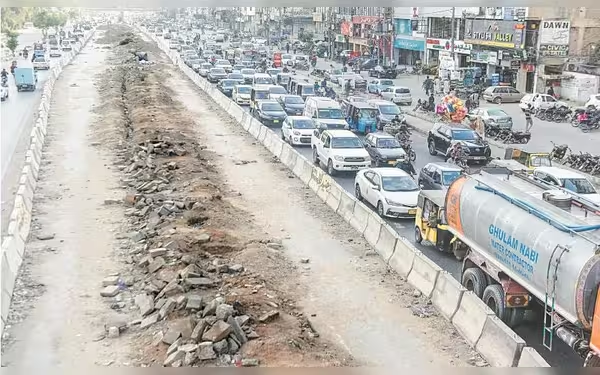Saturday, November 16, 2024 07:40 PM
Coping With Karachi's Traffic Crisis
- Karachi faces severe traffic congestion daily.
- Public transport system has significantly deteriorated.
- Reviving Karachi Circular Railways could ease congestion.
 Image Credits: dawn.com
Image Credits: dawn.comKarachi struggles with severe traffic congestion, necessitating urgent public transport solutions and infrastructure improvements.
Karachi, the bustling metropolis of Pakistan, has long been known for its vibrant culture and economic significance. However, one of the most pressing issues that residents face daily is the city's notorious traffic congestion. Historically, Karachi's urban transport system was a blend of road-based facilities, such as public buses and mini-buses, alongside rail-based services like the Karachi Circular Railways (KCR) and the intra-city tram service. It may be hard to believe, but just half a century ago, the city had a road and rail network that was deemed satisfactory for the needs of commuters and freight movement.
Over the years, the rapid population growth and urban sprawl have outpaced the development of infrastructure, leading to a chaotic traffic situation. The roads, once capable of accommodating the flow of vehicles, are now choked with cars, motorcycles, and rickshaws. The public transport system, which was once a reliable means of getting around, has deteriorated significantly, leaving many residents with no choice but to rely on private vehicles.
As the city continues to expand, the challenges of urbanism become more pronounced. The lack of effective public transport options has forced many to spend hours stuck in traffic, contributing to increased air pollution and a decline in the quality of life. The situation is exacerbated by inadequate road maintenance and the absence of proper traffic management systems.
To cope with Karachi's killer traffic, several solutions have been proposed. The revival of the Karachi Circular Railways is one such initiative that could alleviate some of the congestion by providing a reliable and efficient mode of transport. Additionally, the introduction of dedicated bus lanes and improved traffic signal systems could help streamline the flow of vehicles.
Moreover, urban planners and policymakers must prioritize sustainable transport solutions that encourage the use of public transport and non-motorized options, such as cycling and walking. By investing in infrastructure that supports these modes of transport, Karachi can move towards a more organized and less congested urban environment.
While Karachi's traffic woes may seem insurmountable, there is hope for a brighter future. By learning from past successes and implementing innovative solutions, the city can reclaim its status as a well-connected urban center. It is essential for the government, urban planners, and citizens to work together to create a transport system that meets the needs of all residents, ensuring that Karachi remains a vibrant and livable city for generations to come.













